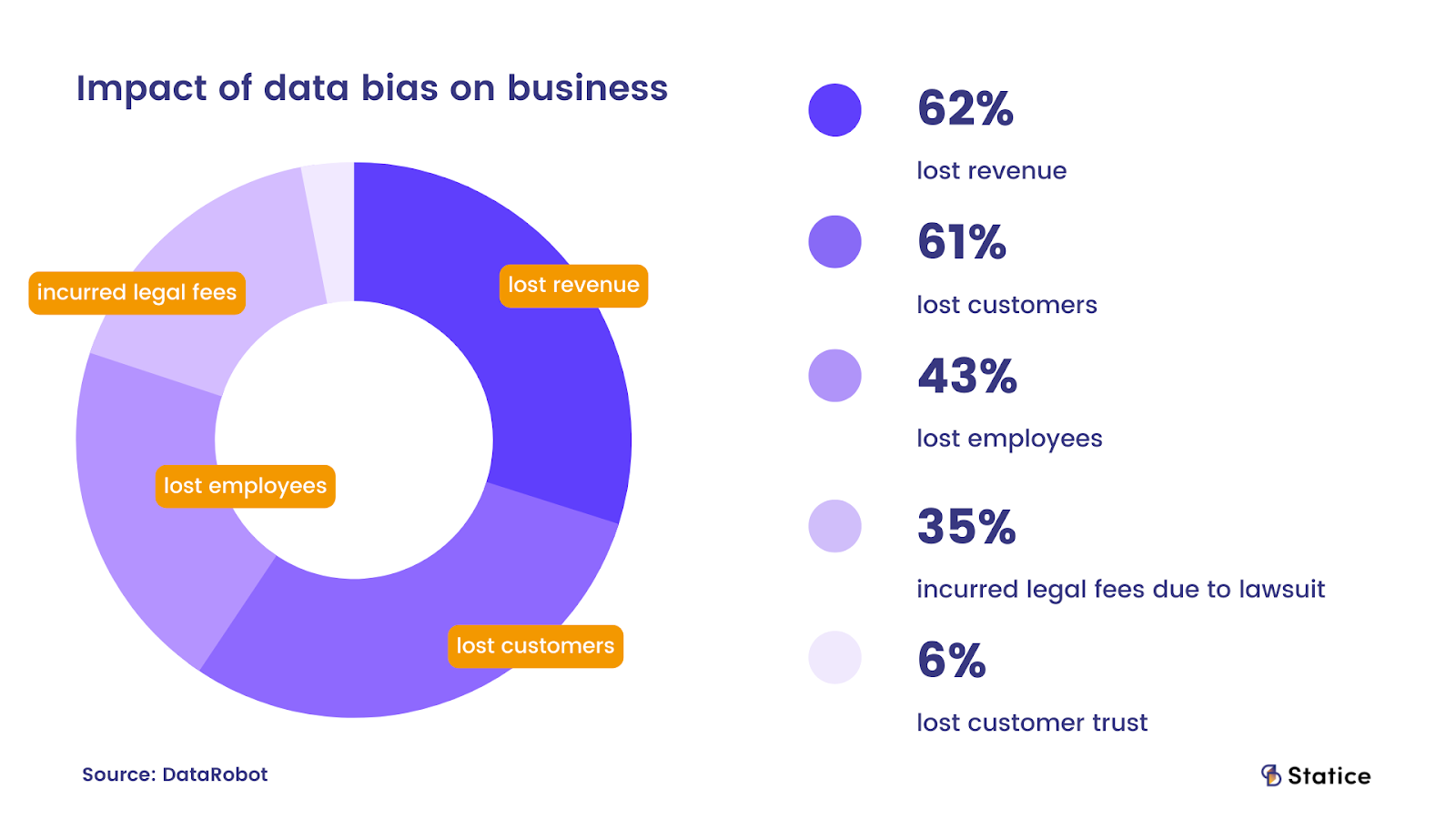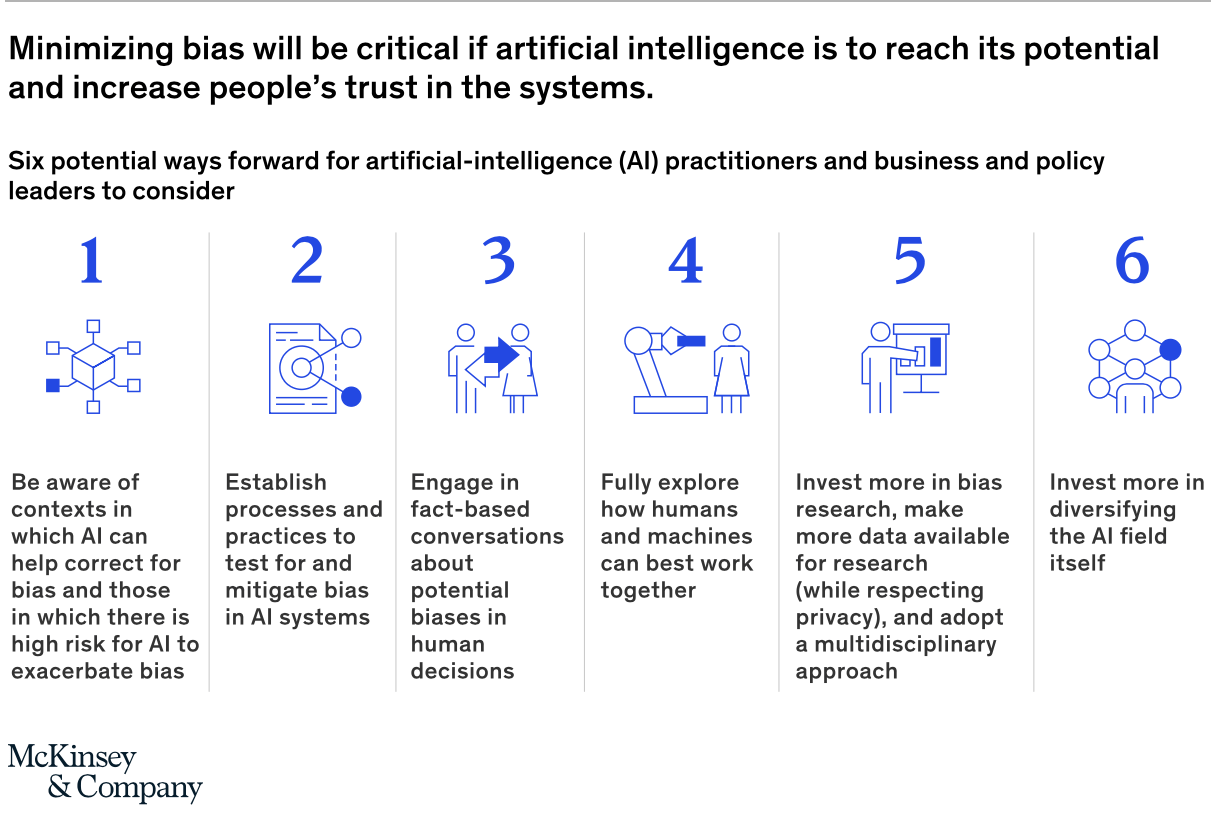Ever because ChatGPT was launched and went viral, AI has been all above the information. And whilst most tech-affine men and women are astonished and can not wait to check out the new prospects, its downsides shouldn’t be ignored.
What if as an alternative of getting much better than people and eradicating our blunders, AI adopts biases and begins discriminating towards particular groups of men and women?
However, stereotypes and prejudice in machine finding out are even now extremely significantly current and dangerous. They have an countless checklist of tragic consequences and the ones who lead to it are frequently not held accountable. So how do we erase these biases and truly pave the way for equality? Looks like a dream come accurate because AI itself can be educated to have these patterns.
What Does AI Bias Appear Like?
Let’s go above number of examples of AI seeing men and women from the see of a human – with all its prejudice and drawer contemplating.
one) The Dutch tax authorities commenced making use of a self finding out algorithm to reduce fraud in social safety. Exclusively it was supposed to detect instances in which the chance for youngster care fraud was extremely higher. What originality appeared like a sensible prepare ended with the algorithm adapting a racist bias.
Aspects like non-Deutch nationality would enhance the chance of fraud consequently generalizing all men and women of a single label and generating a website link in between their nationality and getting far more probably to be criminal.
As a consequence, the algorithm-chosen folks had to deal with bureaucratic and legal problems and even pay back child care allowances, which can be up in the triple digits – oftentimes leaving them in wonderful debt and demanding their personal lives – all simply because an artificial algorithm advised them so.
two) A huge amount of U.S. hospitals and insurance companies are making use of an algorithm to detect individuals attending “high-chance care management” to make them eligible for particular care and healthcare interest.
To discover out who qualifies, prior price for healthcare visits was a issue. Hunting at the numbers, even although the two black and white individuals frequently shared the identical numbers, black individuals hardly ever experienced for this particular care system.
The review discovered that black and white individuals with the identical investing had diverse overall health care specifications, with black individuals frequently requiring far more energetic interventions. Regardless of obtaining far more persistent illnesses, black individuals acquired reduce chance scores, major to the system overlooking them for higher-chance care management.
This concern is exacerbated by the truth that race and earnings are correlated, and poorer individuals, who are disproportionately men and women of colour, have a tendency to use healthcare solutions significantly less regularly or have lowered accessibility to them.
Implicit racial bias also contributes to disparities in overall health care, with black individuals obtaining reduce-good quality care and obtaining significantly less believe in in physicians, major to lowered overall health care utilization.
As a result, making use of overall health care investing as a proxy for healthcare demands inadvertently produces a biased technique that fails to account for the distinctive problems faced by diverse racial and socioeconomic groups.
three) Arrested, humiliated, and innocent, Robert Williams was wrongfully locked up simply because a facial recognition software falsely recognized him as a guy needed for a robbery. The technologies wasn’t in a position to differentiate in between two guys of the identical race and entire body measurements. Though the accusations have been dropped, his DNA samples, fingerprints and mugshot continue to be in the technique.
These incidents highlight that technologies does not solely operate on impartial information rather, it inadvertently absorbs the biases of these who build and train it. Consequently, the algorithms can perpetuate systemic prejudices, reinforcing societal inequalities and perpetrating injustices towards marginalized communities.
How Can AI Possess Bias?
Automation streamlines processes, saves time, and minimizes the require for human labor, ideally major to enhanced efficiency and fewer human mistakes. When working optimally, technologies like facial recognition can even aid fix and avoid crimes. As a consequence, several firms and developers strive to make their algorithms and AI techniques as intelligent as achievable to conserve time and sources. But how does an algorithm find out to determine patterns and filter info? The solution lies in education. Comparable to people, AI techniques are fed information to find out and draw conclusions based mostly on that info.
A single contributing issue to AI bias is the inherent bias current in the education information, which mirrors the stereotypes and prejudices of the planet about us. These biases can be discovered in a variety of elements of existence, such as Google searches and statistical information. A team of researchers found that far more than a third of the analyzed database exhibited bias. Consequently, folks from diverse religious, gender, racial, or occupational backgrounds may possibly expertise disparate therapy, both positively or negatively.
One more cause for the imperfections in AI algorithms is the lack of diversity inside the developer and AI skilled neighborhood. Varied teams generally make far more nuanced and extensive final results that much better signify the complexities of our present day, globalized planet. By fostering diversity in the discipline, we can function in the direction of building AI techniques that mitigate, rather than perpetuate, present biases and inequalities.
Consequences of Biases AI
Biased AI doesn’t just hurt victims, but also these taking into consideration making use of self-finding out algorithms. Company leaders know there are hazards with making use of new technologies.
They fret about shedding believe in from consumers and employees, negative publicity, legal troubles, and ethical problems. These worries make sense, as significantly less believe in can lead to significantly less income and far more legal difficulty. So, it truly is crucial for companies to resolve AI biases to hold a great popularity and stay away from troubles.


So What Can Be Accomplished?
Even though the preliminary sections of this submit painted a relatively bleak image, it is crucial to acknowledge that these problems can be addressed. Ideally, eradicating prejudice from society and human consciousness would be the greatest remedy from an ethical standpoint. Even so, this is a lengthy-phrase purpose and not the major emphasis of this website. Luckily, AI can be enhanced in the meantime if the good quality of education information is enhanced.
A single recommended technique is to educate data scientists about the problems linked with their function and how to preserve ethical awareness whilst dealing with databases. This can involve getting rid of certain classes from their information, this kind of as race or gender, to avoid the introduction of biases in the algorithm. By taking these methods, information scientists can contribute to the improvement of far more equitable AI techniques.
Furthermore, marketing diversity inside AI improvement teams can lead to a broader variety of perspectives and aid determine likely biases that may possibly be ignored by a far more homogeneous group. Encouraging collaboration amongst pros with diverse backgrounds and experiences can foster a far more extensive knowing of likely biases and facilitate the creation of AI techniques that much better signify the complexities of our various, international society.


The EU AI Act
The European Union has just lately passed the AI Pact, a pioneering law on artificial intelligence (AI) that categorizes AI applications into 3 chance amounts. This groundbreaking legislation has the likely to influence AI rules throughout the world, significantly like the EU’s General Data Protection Regulation (GDPR) in 2018. AI impacts several elements of day-to-day existence, such as on-line articles suggestions, facial recognition, and healthcare diagnoses.
The AI Act assigns AI applications to 3 chance classes. The very first group bans techniques that pose an unacceptable chance, this kind of as government-run social scoring techniques. The 2nd group, higher-chance applications, involves equipment like CV scanners that rank work candidates and mandates certain legal specifications for these applications. The third group leaves applications not explicitly banned or listed as higher-chance largely unregulated.
Even though the EU AI Act is a considerable stage forward, it has its limitations and loopholes. For instance, police facial recognition is prohibited except in instances the place photos are captured with a delay or employed to find missing kids. Furthermore, the law lacks versatility to react to emerging threats, as it does not supply a mechanism for labeling new, hazardous AI applications as “higher-chance” in the potential.
To more improve the effectiveness of the AI Act, lawmakers could function on closing these loopholes, refining exceptions, and escalating the law’s adaptability to accommodate unforeseen hazards. The EU AI Act could turn out to be a international normal for AI regulation, guaranteeing that AI is a force for great in people’s lives, irrespective of their spot.
This legislation may possibly inspire other nations to adopt equivalent frameworks, as evidenced by Brazil’s recent move to create a legal framework for AI, which is at present awaiting Senate approval.
Ultimate Ideas and Outlook
AI provides wonderful probabilities for progress and new suggestions we could not picture just before. But we should bear in mind that we’re even now finding out about AI. Till we’re positive it truly is much better than people, we need to be cautious making use of AI in crucial scenarios.
As we find out far more about AI, it truly is crucial to speak openly and pay attention to diverse viewpoints. By repairing biases in AI and focusing on ethical improvement, we can develop AI that assists every person. Folks require to be concerned and mindful so that developers and lawmakers make positive AI is a great issue, not some thing that continues outdated troubles and unfairness.
We want to hear what you believe about this post and your experiences with AI and biases. Your ideas can aid us recognize AI’s problems and options and hold the conversation going about creating technologies honest and inclusive. Please depart a comment or allow us know how we can do much better!




